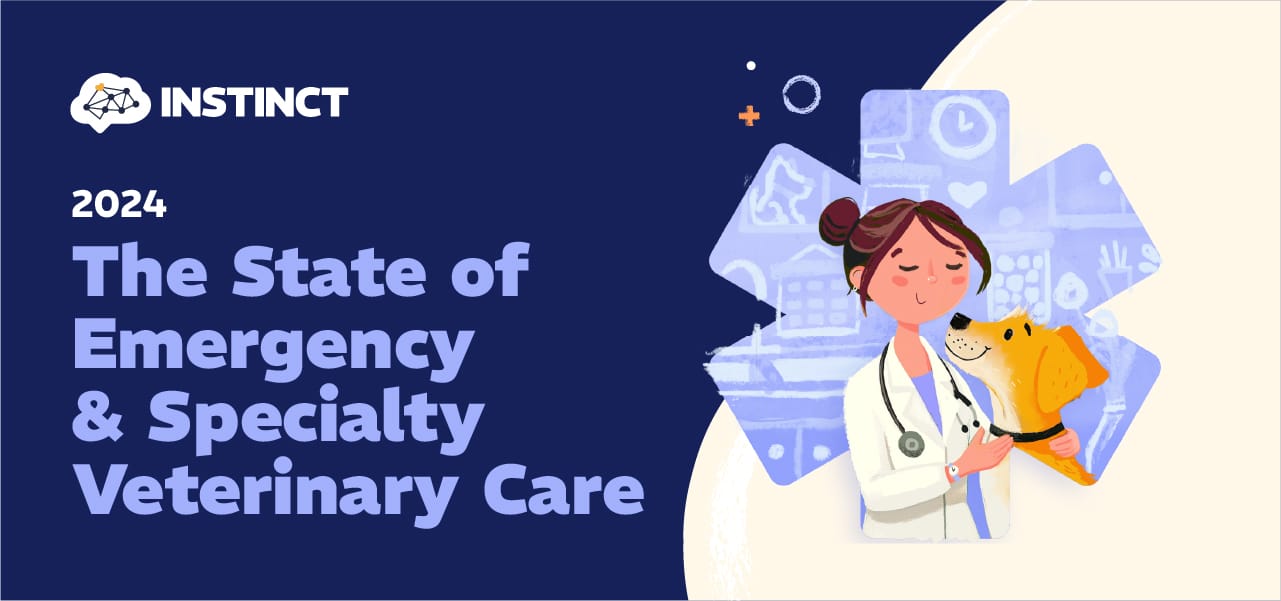In our second annual report, The State of Emergency & Specialty Veterinary Care in 2024, we surveyed over 545 veterinary professionals across emergency, specialty, and urgent care hospitals, offering a comprehensive look at how practices are navigating the most pressing issues this year.
Here’s a peek at some of the year-over-year trends shaping our industry.
Patient Volume: A Shift Toward Stability
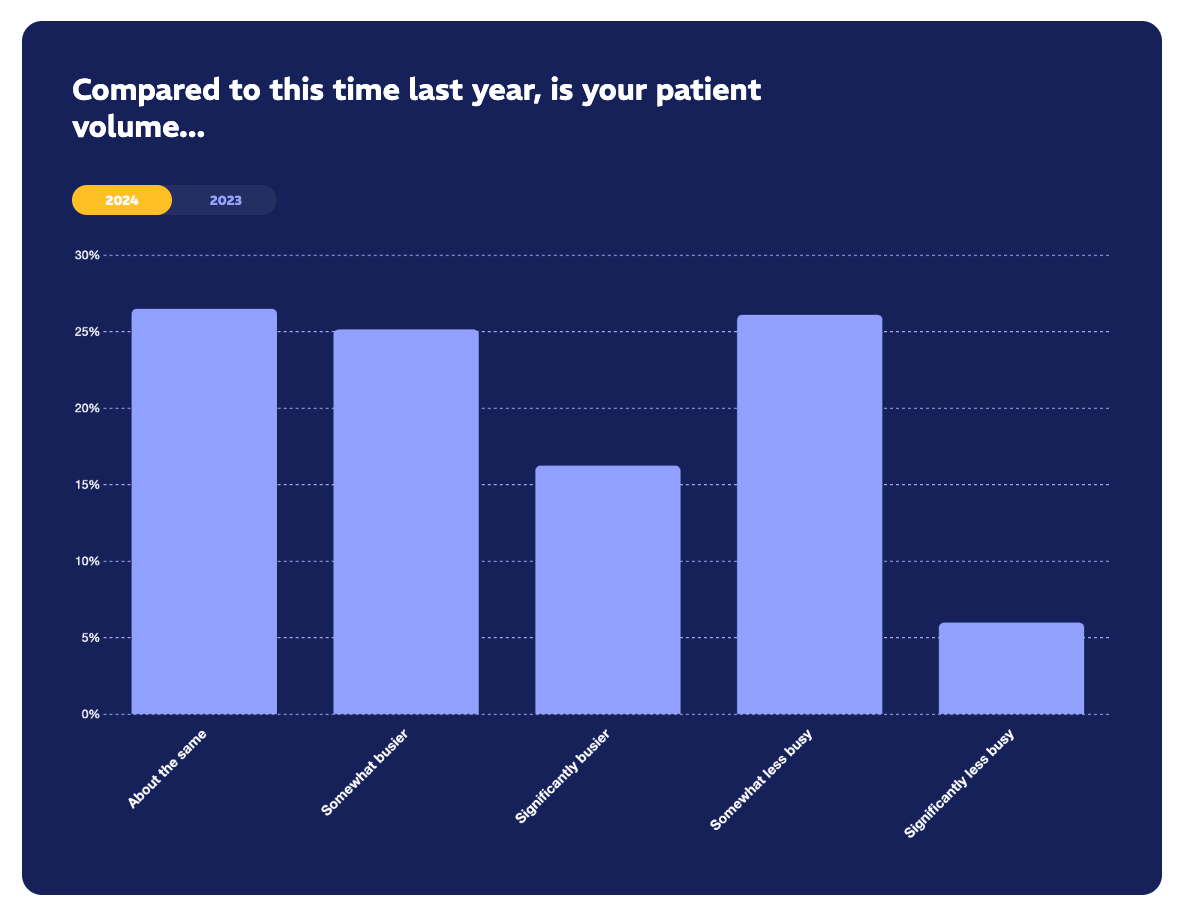
Let’s start with some welcome news: Patient volume in emergency and specialty hospitals is finally stabilizing. After several years of relentless growth, hospitals are seeing the pressure ease. We’re seeing 27% of practices reporting about the same volume as last year, and 32% reporting being less busy than in 2023.
When looking at this question from our year over year data, practices reporting being "less busy" increased by 12% from 2023 to 2024, indicating the shift towards lower demand levels.
Alongside volumes, we’re seeing an improvement in wait times: the percentage of patients waiting under 15 minutes more than doubled from 2023 to 2024, and the proportion of patients waiting over 2 hours decreased from 27% to 16%.
This shift signals a possible correction after heightened demand during the pandemic years. The impact is especially pronounced in urgent care centers and smaller practices, where patient flow appears more manageable. While we’re not out of the woods yet, these changes are helping hospitals regain control of their schedules and, ultimately, improve the quality of care they provide.
The challenge of completed services missing from final billing saw a reduction from 43% to 35%, while concerns over increased patient volume significantly dropped from 59% in 2023 to 36% in 2024.
However, with patient volumes easing, we’ve also seen a plateau in hiring rates—more on that later.
Staffing: Challenges Persist—But There’s Progress
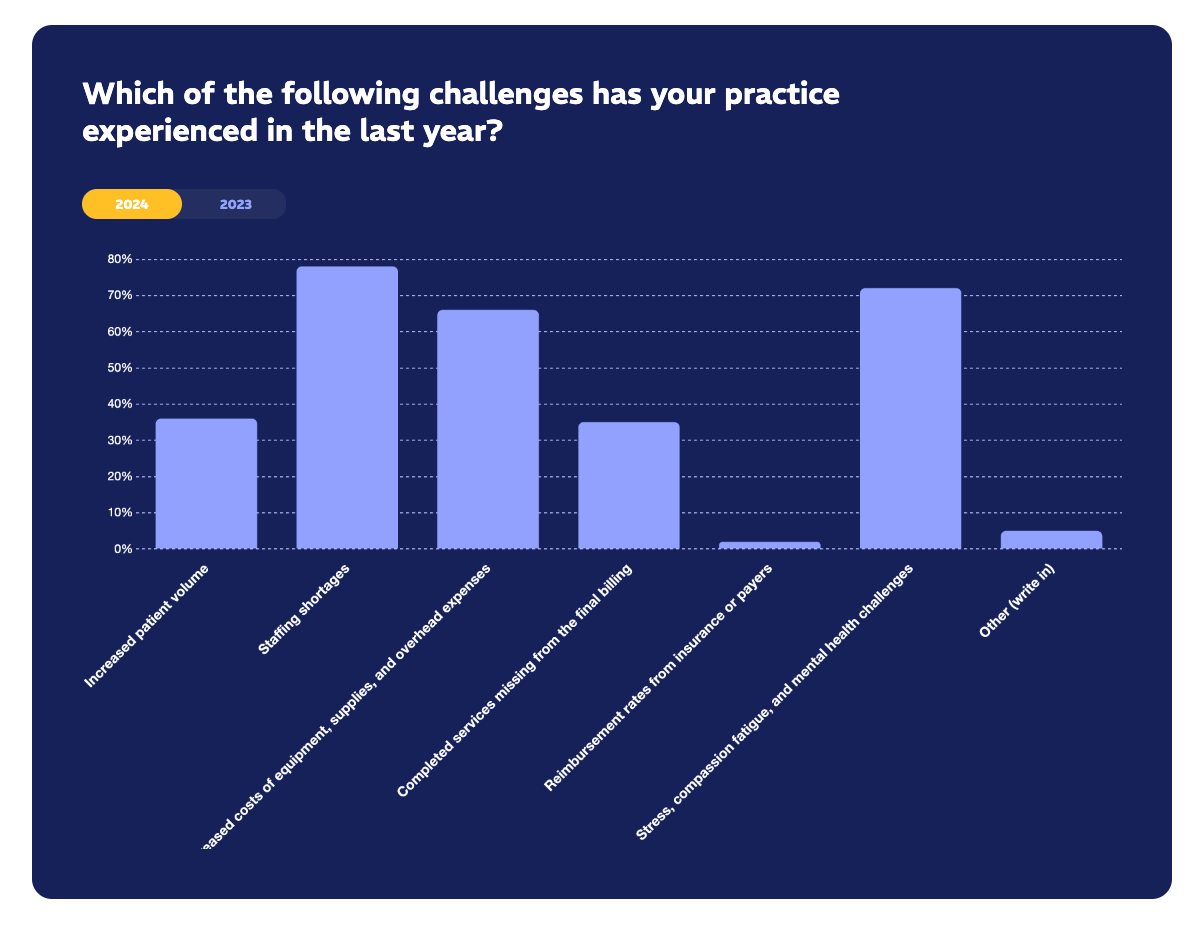
Staffing remains a critical issue, but we’re seeing some progress here, too. The majority of respondents (78%) still identified staffing shortages as their top challenge, but that’s a step down from the 86% reported in 2023. This small but meaningful improvement shows that some practices are getting better at handling their workforce needs.
One area that remains stubbornly difficult is retaining veterinary technicians and nurses. Nearly 80% of hospitals reported turnover in these roles, highlighting the ongoing strain on staff well-being and work-life balance.
To cope with these persistent shortages, 56% of hospitals have increased overtime hours for their existing teams, while 40% are using relief veterinarians in 2024. However, we’re hearing more and more that relief staff alone can’t solve the deeper issues of burnout and job dissatisfaction, which brings us to our next key finding: morale.
Morale and Job Satisfaction: Moving in the Right Direction
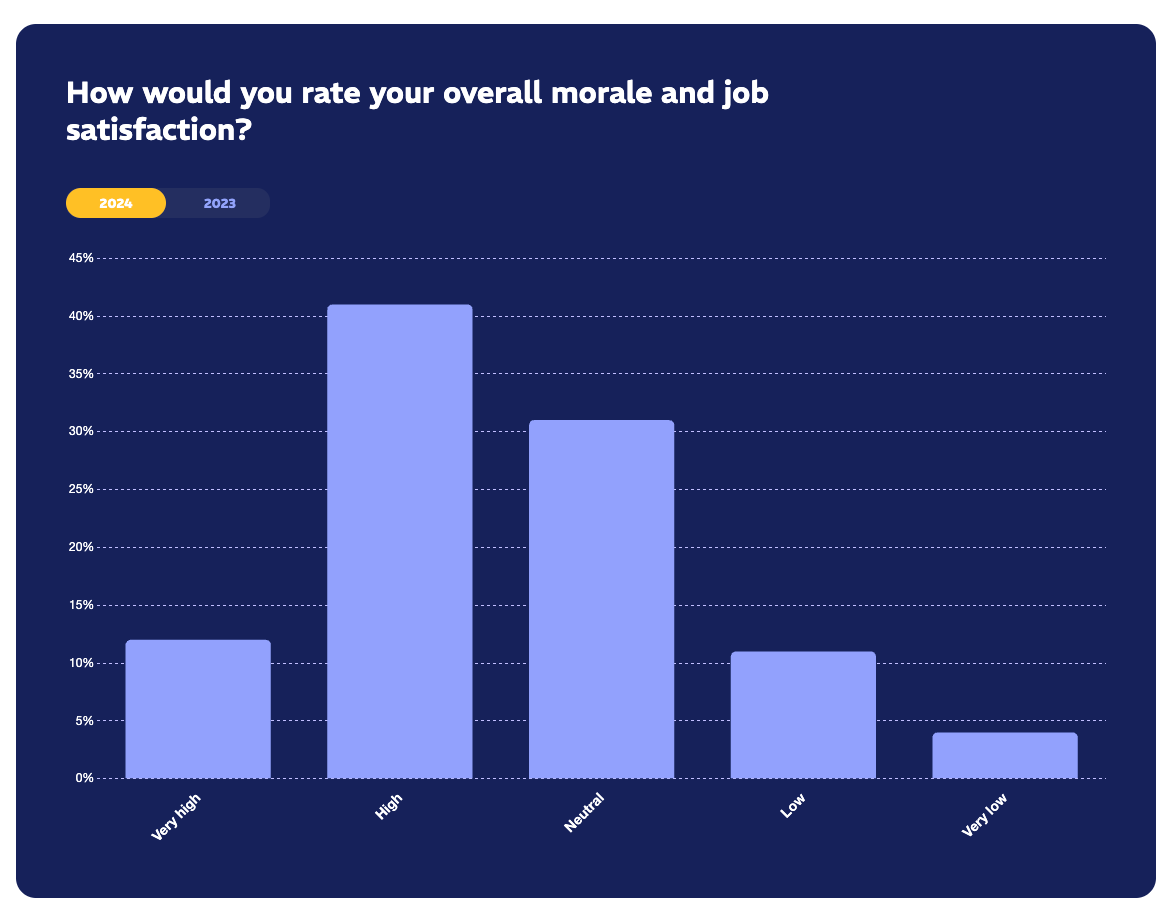
There’s encouraging news on the morale front this year. While turnover and staffing issues persist, 54% of respondents reported high or very high morale—an increase from 34% in 2023. Even more promising, the number of respondents reporting low morale dropped from 21% to 11%.
This improvement in job satisfaction can be traced back to several factors. Hospitals that have made concerted efforts to focus on mental health, such as offering wellness days and counseling services, are seeing tangible results. Practices that have embraced more open communication and leadership support are fostering stronger teams, and it’s paying off.
Of course, the flipside is that 16% of staff still report low to very low morale. It’s clear that practices must continue to prioritize employee engagement and well-being, especially with staffing shortages putting pressure on the entire workforce. But the improvement in morale is a bright spot in this year's survey, showing that proactive wellness efforts are starting to make an impact.
Hiring and Salaries: A Mixed Picture
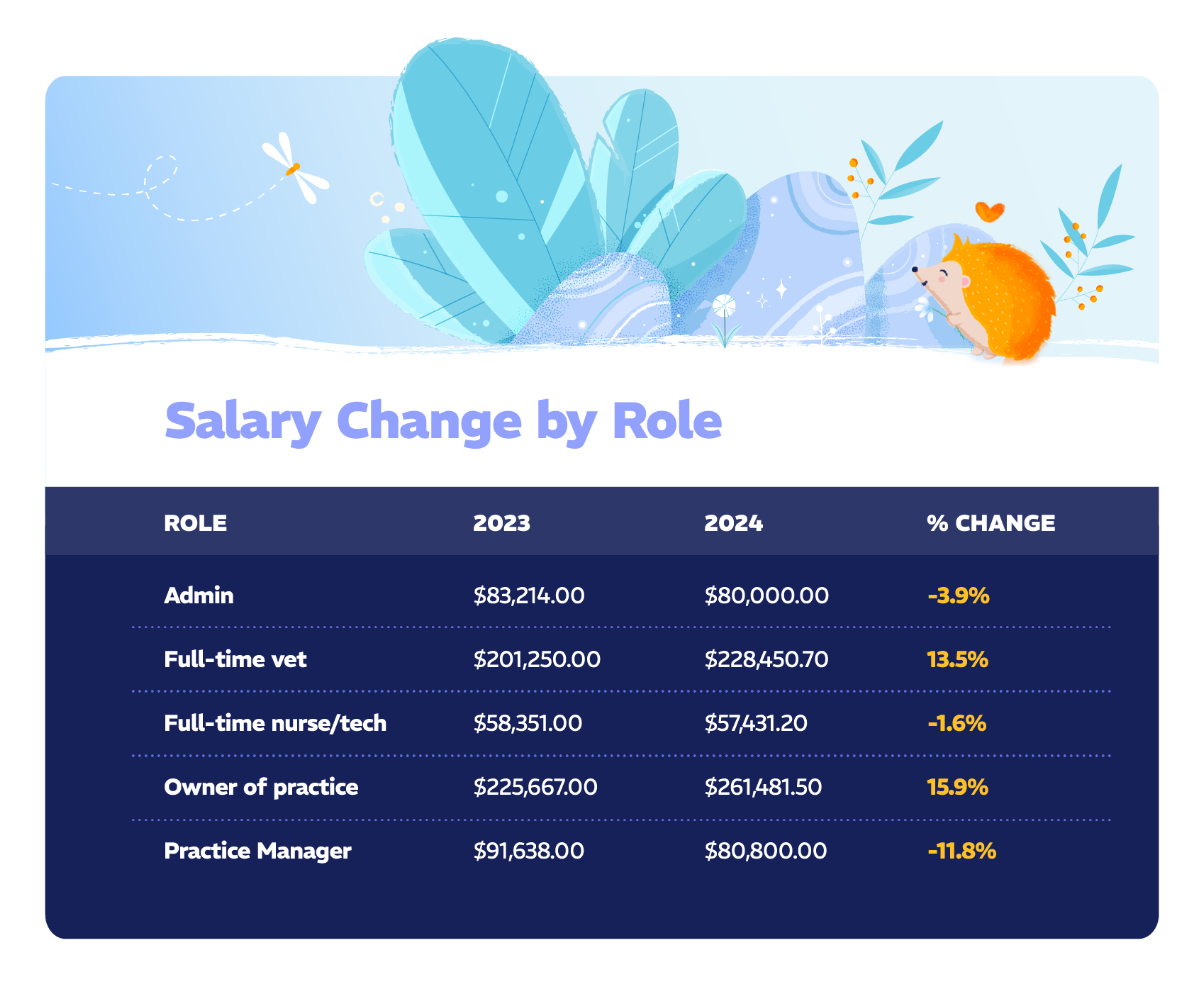
With patient volumes leveling out, hiring has also seen some shifts. Half of hospitals reported hiring new staff in 2024, down from 55% last year, and hiring of technicians/nurses dropped slightly from 68% to 63%. This modest slowdown aligns with the stabilization in patient volume, but there’s still strong demand for skilled workers in the industry.
However, we’re seeing a more noticeable uptick in practices reducing staff. This year, 16% of practices reported cutting technicians/nurses, up from 12% in 2023, suggesting that economic pressures might be influencing these decisions.
Salary shifts varied across roles. Full-time veterinarians and practice owners saw significant pay increases of 13.5% and 15.9%, respectively, while practice managers experienced the steepest decline, with salaries dropping by 11.8% compared to 2023. These trends underscore rising pay for leadership roles but ongoing challenges for managerial and support staff.
Overall, only 25% of respondents reported salary increases this year, down from 39% in 2023, signaling tighter compensation trends in other areas. Pay remains a major concern, with 35% of respondents citing insufficient compensation as a key issue—up from 27% in 2023. As we look ahead, addressing the compensation gap will be crucial for attracting and retaining top talent across all roles.
Technology: The Catalyst for Change
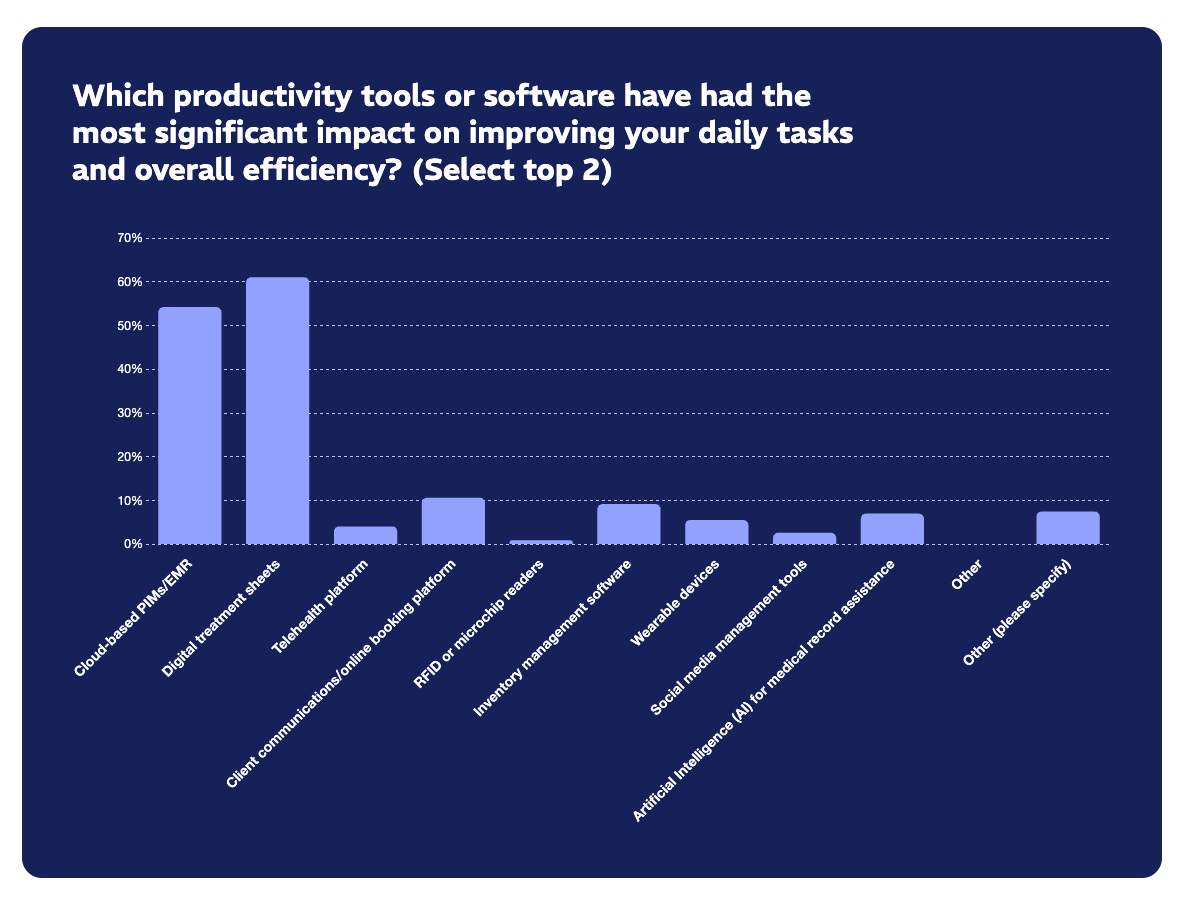
Technology continues to play a pivotal role in shaping the future of emergency and specialty care, and this year’s report reinforces its growing influence. Fifty-seven (57%) percent of respondents reported that new technology has improved their work-life balance, helping to offset the pressures of patient care and administrative workloads.
Digital treatment sheets (76%) and cloud-based PIMs/EMRs (71%) are the standout tools transforming workflows and boosting efficiency.
While AI and other emerging technologies are starting to gain traction, many hospitals are still in the early stages of adoption. Many hospitals are experimenting with AI for diagnostic support, but it’s largely been met with mixed reviews. The common thread, however, is evident: hospitals that embrace technology are seeing stronger productivity and more satisfied employees.
Looking Ahead: A Year of Stabilization and Opportunity
As we reflect on 2024, it’s clear that the landscape for emergency and specialty veterinary care is stabilizing, albeit slowly. Patient volumes are leveling off, morale is on the rise, and while staffing challenges remain, there’s hope that we’re moving in the right direction.
But the road ahead still has its hurdles. Compensation, turnover, and work-life balance will continue to be focal points in the years ahead, and practices that invest in their teams—through better wages, wellness programs, and technology—are the ones that will thrive.
We’re excited to continue our journey with the emergency and specialty veterinary community, tackling these challenges head-on and discovering new opportunities for growth and success in the years to come.

